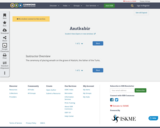
The ceremony of placing wreath on the grave of Atatürk, the father of the Turks.
- Subject:
- History
- Political Science
- Material Type:
- Primary Source
- Author:
- Gökçe Topluk
- Date Added:
- 03/10/2022

The ceremony of placing wreath on the grave of Atatürk, the father of the Turks.
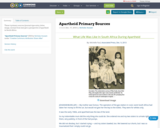
These 4 primary sources (journal-type entry, letter, image, excerpt from law) give a perspective of apartheid in South Africa.
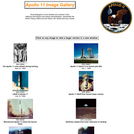
NASA presents this gallery of images from the Apollo 11 mission to the moon in 1969.
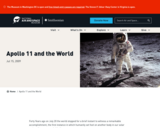
When the Apollo 11 spacecraft lifted off on July 16, 1969, for the Moon, it signaled a climactic instance in human history.
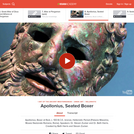
Apollonius, Boxer at Rest, c. 100 B.C.E., bronze, Hellenistic Period (Palazzo Massimo, Museo Nazionale Romano, Rome). Speakers: Dr. Steven Zucker and Dr. Beth Harris. Created by Beth Harris and Steven Zucker.
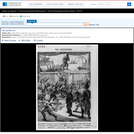
The print is a fragment of a larger lithograph entitled "Invasion of Cuba," composed of two panels, applauding American "filibustering" expeditions to liberate Cuba from Spain. (See also "The Great Naval Blockade of Round Island" and "Genl Lopez the Cuban Patriot Getting His Cash," nos. 1849-5 and 1850-10.) "Invasion of Cuba" evidently appeared in the wake of Lopez's second failed invasion of Cuba in August 1851. The left panel, "The Expedition," expresses sympathy with American intervention there in defiance of Great Britain. Our panel criticizes the Fillmore administration's conciliatory attitude toward Cuba, and alignment of the island's Spanish rule with the Catholic Church and other conservative powers in Europe. Spanish governor Jose Gutierez de la Concha sits on a throne in the center of a crowded scene, his left foot on the face of the recumbent female figure of Cuba, as he decorates American consul A. F. Owen, who kneels at left. In the right foreground American Secretary of State Daniel Webster holds a "Secret Treaty with Spain" in one hand and behind his back clasps hands with Britain, represented by a lion in sailor's costume. Nearby stands a fox in uniform, probably representing France. To the right of the throne stand various prelates, bishops, and the pope, along with several beasts wearing crowns. On the left of the throne are ministers with star-shaped heads, in a state of agitation. In the left foreground Brother Jonathan, smoking a cigar and waving a saber, carries off a Cuban flag. Above Gutierez's throne are several smaller scenes of Spanish atrocities. On the left is the execution by a Cuban firing squad of American volunteers under W. H. Crittenden in Havana, August 16, 1851. The captive Americans are bound and kneeling. In the center, expedition commander Narciso Lopez is garroted by a black man, as he sits in a chair decorated with a small cross (an anti-Catholic reference). The scene on the right shows two ships, one American and one Cuban, and has the date August 13. It may represent the capture of Crittenden's retreating forces on the high seas. Below the print is the caustic commentary: "Our Consul at Havana decorated by Don Quixote with the Order of the Golden Fleeze for his Neutrality in the Cuba Question under the Applause of the Absolute Powers! The Stars in Consternation. Jonathan runs off swearing: 'Cuba must be smoked' anyhow!"|Signed with monogram: AW.|Title appears as it is written on the item.|Murrell, p. 188-189 (reproduces the complete print).|Weitenkampf, p. 104.|Forms part of: American cartoon print filing series (Library of Congress)|Published in: American political prints, 1766-1876 / Bernard F. Reilly. Boston : G.K. Hall, 1991, entry 1851-4.

Throughout this lesson, the students will learn how to correctly take measurements to create a fitted garment. Students will begin with brainstorming measuring tools. Next, they will discuss fabric sizing as a class. Students will learn about the history of measurements and why it is important to take measurements. Individuals will team up in pairs to practice taking measurement. Finally, students will apply the measurements by comparing and contrasting them with a home-sew pattern. This lesson could be used before a student begins creating a garment for themselves, especially in Intro to Design or an Apparel Production & Construction course.
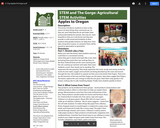
In this lesson, students are introduced to trees and the many things we commonly use that come from trees. Includes introductory movement activity, guided discussion, a matching game, and fun facts.
NGSS: Partially meets 1-LS1-1, 2-PS1-1, 2-PS1-2
Common Core: W.2.7, W.2.8
Time: 30 minutes
Materials: "Apples to Oregon" book and three paper lunch bags labled: wood, food, cellulose.
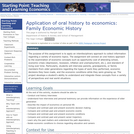
Application of Oral History to Economics: Family Economic History The assignment will connect an oral history approach to the examination of economic concepts such as opportunity cost of attending school, economic crises (inflation and unemployment, etc.), and standard of living over time. Particularly, students will interview parents, grandparents, or family members from older generations regarding the types of work they performed, economic decisions they have made, and the economic conditions while they were growing up. The project develops a student's ability to understand and integrate these concepts from a variety of perspectives and real world situation.

Short Description:
Every applied ethics course requires some brief introduction, survey, or primer on ethical theory and moral decision-making. At the same time, spending too much time on argumentation and normative ethical theory can take precious course time away from the applied issues that are the focus of the course. This Applied Ethics Primer offers a concise introduction to both basic argumentation and normative ethical theory. The concepts discussed reflect the ethical theories that currently ground most professional ethics codes and debates in applied ethics. Somewhat more inclusive than many similar resources, this primer offers students a taste of the truly global history of ethics, while still being squarely focussed on providing practical tools for ethical decision-making. It is appropriate for any introductory applied ethics course.
Long Description:
Every applied ethics course requires some brief introduction to ethical theory and philosophical reasoning. Without this, applied ethics courses risk merely teaching students how to rationalize their prejudices and preferences rather than teaching them how to critically assess and engage in ethical decision-making. At the same time, spending too much time on normative ethical theory can take precious course time away from the applied issues that are the focus of the course.
The Applied Ethics Primer offers a concise intoduction to both basic argumentation and normative ethics that can be integrated into any applied ethics course. The primer provides the basic conceptual tools needed to analyze ethical positions, identify ethical problems, and assess arguments, all without assuming any prior knowledge of ethics or argumentation theory. The concepts discussed reflect the normative concepts that ground most professional ethics codes and debates in applied ethics. At the same time, the content is global, drawing on ethical theories and practices from Asia, Africa, Europe, and Indigenous traditions of North America, as well as feminist theory.
Part I introduces the ethical question—what should I do?—and how to address it. The first chapter alerts readers to the role of emotions in moral responses and the importance of reflection. This grounds a brief discussion of disagreement that leads to the second chapter on reason and argument. Here we introduce argument analysis and offer advice on how to engage in productive debates and the importance of public reasons.
Part II constitutes the main body of the primer—the ethical lenses. The first chapter focuses on consequences, presenting both the ideas of Mozi and act and rule utilitarianism. We then turn to a focus on action, with a discussion of duties based on social role, past action, and reason alone, which draw from a passage in the Bhagavad Gita, the work of W.D. Ross, and Kantian deontology, respectively. The chapter that focuses on character (and virtue) addresses both Aristotle’s eudaimonism and Buddhist ethics, particularly emphasizing the root poisons and the eightfold path. The last main chapter in this part addresses ethical approaches that focus on relations, looking at feminist ideas about personal and political relationships (with a nod to Kongfuzi), before turning to African communal ethics, captured by the concept of ubuntu, and the all my relations and seven generations teachings from the philosophies of the first nations of what settlers call North America. The part on ethical lenses is followed by a brief part that addresses a couple of important ethical ideas that cannot be captured by any given lens. Here we introduce the concept of ahimsa (or non-violence), which reflects all of the lenses equally, and the concept of rights that cannot adequately be captured by any of them.
The final part addresses self-regarding attitudes, such as rational self-interest—which is shown to ground social contract theory—as well as biases like exceptionalism and moral licensing. We end this section with a discussion of helpful heuristics and conclude the primer with an emphasis on the importance of careful reflection and argumentation for ethical decision-making.
The primer has several pedagogical tools, including a set of recommended readings at the end of the chapters that address substantive ethical theories, a set of “Stop and think” reflective excercises throughout the primer, and brief self-quizzes at the end of each chapter. The appendix includes a set of tips for reading philosophy and a critical thinking worksheet. There is also a glossary for key terms. We also provide support for how to cite the primer and how to pronounce some of the unfamiliar terms.
Word Count: 27818
(Note: This resource's metadata has been created automatically by reformatting and/or combining the information that the author initially provided as part of a bulk import process.)
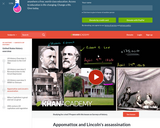
From Lee's Surrender to Grant to Lincoln's Assassination. Created by Sal Khan.
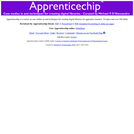
Apprenticechip is a course on case studies in and techniques for creating digital libraries for apprentice learners.
The goals of this course are: 1. Learn a 10 step approach to digital library design, creation, curation, operation and evaluation. 2. Through the lens of this 10 step approach, review case studies of over 20 digital libraries of various sizes, encompassing a variety of disciplines, addressing diverse missions, utilizing a variety of technologies and learn how they succeeded and failed. 3. Use this 10 step approach to create your own small digital library to help apprentice learners in your area of professional expertise or personal passion.
We also wish to provide an introduction to digital libraries and to explore the questions 1) What is the history of digital libraries and learning? 2) What is the future of digital libraries and learning? 3) How can we create digital libraries that help apprentice learners? and 4) What role do professional + amateur librarians have to play in the future of digital libraries and learning?

A Humanities Textbook: Lower Division
Short Description:
An introductory examination of cultural appropriation in the fine arts and popular arts of the United States, with reference to historical, literary, and other cultural developments. The primary focus is the use of cultural appropriation to communicate ideas about racial identity in ways that have served the interests of the dominant culture. Areas of specific concern are voice appropriation, content appropriation, style appropriation, and motif appropriation. The emphasis is on historically significant examples in the visual arts, literature, theater, and music. As expressive communication, the arts are central to cultural identity. Cultural appropriation is wrong when it undermines America's diversity of cultural identities. Generations of American artists have used cultural appropriation as a tool of racial privilege. Despite this history of harmful and wrongful appropriation, cultural appropriation also provides a tactic of response and self-empowerment for non-dominant groups. Appropriation is frequently used by non-dominant groups and subcultures as a tool of active resistance against stereotyping and discrimination.
Word Count: 68176
(Note: This resource's metadata has been created automatically by reformatting and/or combining the information that the author initially provided as part of a bulk import process.)
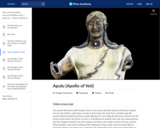
Apulu (Apollo of Veii), from the roof of the Portonaccio temple, Italy, c. 510-500 B.C.E., painted terracotta, 5 feet, 11 inches high (Museo Nazionale di Villa Giulia, Rome). Speakers: Dr Steven Zucker and Dr. Beth Harris.
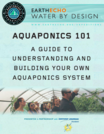
In this curricular guide, middle school students learn about an alternative farming technique that addresses water use in agricultural farming, the environmental impacts of fish farms, and urban development and population growth. This guide promotes 21st-century skills by engaging students in the history of aquaponics through various texts; improving their communication skills by explaining how an aquaponics system works; and engineering your own classroom aquaponics unit through an interactive design challenge!
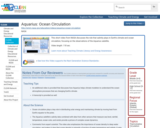
This short video from NASA discusses the role that salinity plays in Earth's climate and ocean circulation, focusing on the observations of the Aquarius satellite.

Ara Pacis Augustae (Altar of Augustan Peace), 13-9 B.C.E.Speakers: Dr. Beth Harris & Dr. Steven Zucker. Created by Beth Harris and Steven Zucker.

Ara Pacis Augustae (Altar of Augustan Peace), 13-9 B.C.E.Speakers: Dr. Beth Harris & Dr. Steven Zucker. Created by Beth Harris and Steven Zucker.
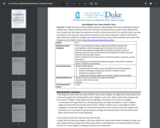
Through this lesson, students will gain a greater understanding of the various challenges that Syrian
refugees face. Students will read excerpts from interviews with Sanaa Domat, a Syrian woman originally from Homs. Students will learn about her experience in both her native country and in her new host country. By using oral histories in the classroom, distant events will become more real and relevant to students. Oral histories were collected by students in a Refugee Lives interactive learning course at Duke University, and are part of the Refugee Lives Oral History Project, http://sites.duke.edu/arabiccommunities/.

Through this lesson, students will gain a greater understanding of the various challenges that Iraqi
refugees face. Students will read excerpts from an interview with Sufyan A., an Iraqi man originally from Baghdad. Students will learn about his experience in both his native country and in his new host country. By using oral histories in the classroom, distant events will become more real and relevant to students. Oral histories were collected by students in a Refugee Lives interactive learning course at Duke University, and are part of the Refugee Lives Oral History Project, http://sites.duke.edu/arabiccommunities/.